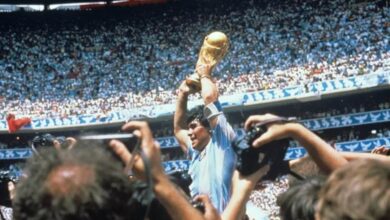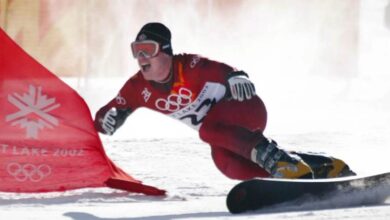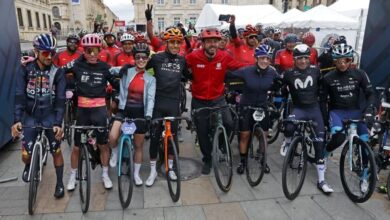Why did’t We See the Paralympic Games on TV?
The Paralympic games do not usually have the same coverage as the Olympic games just like it happened on its sixteenth edition.

The athlete Mauricio Valencia, a silver medalist in the javelin throw, made a call to the Colombian media so that different channels give the same importance to these disciplines as is usually given to a soccer game. Photo: IG-colparalimpico
LatinAmerican Post | Valentina Villamizar Guerrero
Listen to this article
Leer en español: ¿Qué pasó con la transmisión de los Juegos Paralímpicos?
From August 24 to September 5, the Paralympic Games were held in Tokyo, with the participation of 139 countries and 4,400 para-athletes, who competed in 22 disciplines. However, and despite the fact that in this installment different groups from Latin America stood out in the table, there was no significant coverage by television or digital media in the different competitions as one would have expected to see in the same way that happened in the Olympic Games.
After the arrival of the Colombian Paralympic delegation to his country, the athlete Mauricio Valencia, a silver medalist in javelin throw, made a call to the Colombian media so that different channels give the same importance to these disciplines as he usually gives to a soccer game in the nation. "Hopefully you, as information entities, can give that (coverage) first-hand to Colombia, to the Paralympic sport," said the athlete, emphasizing that the participation of these athletes and their results should be shouted as "a World Cup goal." .
Also read: Incredible! These Latin American Paralympic Athletes broke Records in Tokyo
In addition, the official website of the Paralympics presented a list where it indicated by which media and channels, depending on the country, the transmissions of the different sports in this category could be seen. However, in some regions the broadcast of these athletic matches was not fulfilled. An example of this is Caracol Televisión (Colombian media) that had acquired the TV rights of the Olympics but there was never any transmission of the Paralympics. In the same way, the Claro Sports channel carried out a good coverage exercise in the Olympic Games where the different disciplines could be seen simultaneously and, in addition to that, each live had narrators and commentators.
Claro Sports also owned the broadcasting rights of the Paralympics, but they were never seen live and direct on its prominent YouTube channel (a highly relevant medium for those who did not have a subscription to this platform). The corporation only left as evidence the highlights of the best moments of an event.
It is worth mentioning that the official channel of the Paralympic committee on YouTube did not stand out in its transmissions. Due to the lack of narrators and experts in the different sports presented, there is a shortcoming in explaining what and how is the adjustment of these disciplines to the para-athletes. This affects the way in how people perceive the Paralympic Games and the exercise of inclusion of these athletes becomes, in one way or another, impaired.
The importance of providing greater coverage to the Paralympic Games.
Through the sale of broadcasting rights (among other sources of commercialization), the Olímpycs in this aspect generates 73% of the income. But what is this profit destined for? The International Olympic Committee (IOC) distributes an estimated USD 3.4 million around the world. That is, this non-profit organization allocates 90% of the income from the games in order to help sports organizations, the development of sports and athletes, especially distributed to poor populations in the world.
The incentive to invest and commercialize the broadcasting rights of the Paralympics to more private channels would generate a greater amount of funds than is usually collected and would be destined to more athletes, organizations, coaches and disciplines. On the other hand, the large-scale transmission of these athletic jousts would help to promote, in cultural and social terms, inclusion not only for Paralympic athletes, but also for people with different capacities around the world. Additionally, the countries would be more connected and in tune with each of the athletes who represent them in all the fields of the different existing disciplines.




